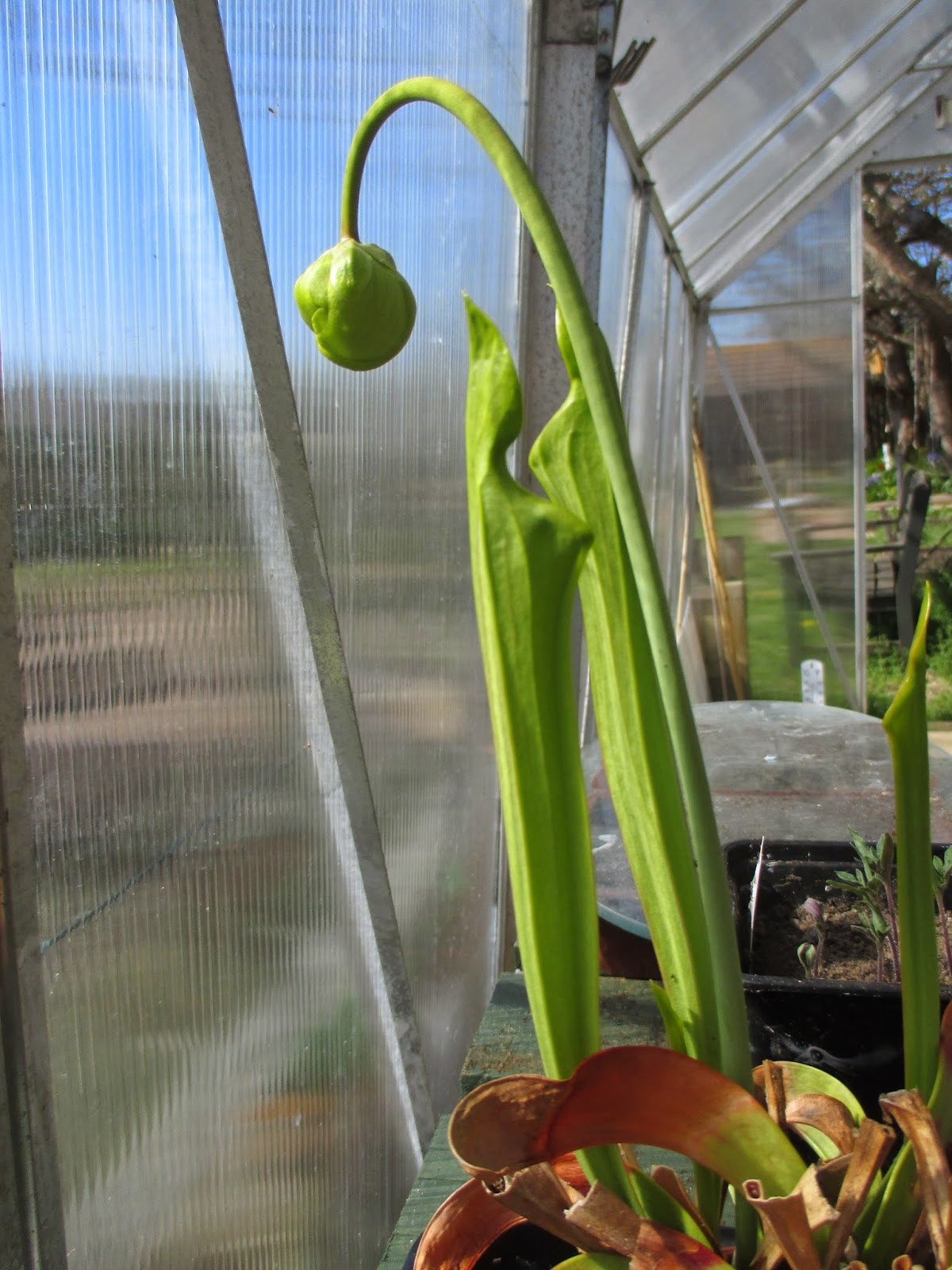because that is where the fruit is"
A quote from Will Rogers. An American born into Cherokee Indian family. His life was cut short by a plane crash (1879-1935)
Over the weekend much gardening was done. The World War 2 bed was dug over and one bed planted with 'Kerr's Pink' potatoes and the other bed with runner beans. We have mixed red and white flowering beans to hopefully make sure that the 'lazy' bees visit the flower and pollinate. When the bee visits the back of the flower no bean forms! We have used 'stringless' Galaxy and Moonlight varieties.
 |
| The WW2 vegetable patch |
While working in this are as the fresh earth was turned a variety of mining bees arrived all keen to bury into the loose soil and create their nesting chambers. Lots of small black bees were prominent but perhaps the most stunning were the Ashy Mining Bee and the Tawny Mining Bee
 |
| Tawny Mining Bee |
 |
| Ashy Mining Bee |
|
|
Several of the classes have started work on the raised beds. Class 2T has planted potatoes. Class 3H has planted tomatoes, aubergines and cucumbers.
The school pond received a lot of attention. The green algae had started to build up again and most of this was carefully removed making sure any mini beasts hiding in it were returned to the pond. Many freshwater shrimps and a stunning Broad-bodied Chaser dragonfly nymph were identified.
 |
| Broad-bodied Chaser dragonfly nymph |
Small bundles of barley straw were then anchored in the pond to hopefully help remove and stop the growth of any more algae. The barley straw breaks down and the chemical released should do the job! We await with interest!
 |
| The barley straw anchored to a container |
 |
| Three bundles of barley straw floating on the pond |
Many species of butterfly were recorded over the weekend including Peacock, Brimstone, Orange Tip and Holly Blue.
The cherry trees are in full bloom and the noise from the bees visiting them is fantastic
Runner beans were planted around one of the wigwams in the edible garden plot and borlotti beans ( Italian variety) around the other wigwam. The Desiree potatoes in the large plot are just showing and will need earthing up next weekend.
Overhead a stream of Swallows and House Martins were noted as they returned from their wintering quarters in Africa. Locally we have a pair of Blue Tits nesting in the original bird box and a pair of Great Tits in the recently installed nest box alongside the sheds. The female Great Tit was sat on 7 eggs.
 |
| Blue Tit outside her home |
|
|
 |
| Female Great Tit on her nest |
In the greenhouse the pitcher plants are flowering. A better show than last year which might be because we split the plants earlier this year and got many 'free' plants from the exercise
One of our cactus plants is also starting to flower. The small pink flowers only last one day or so!
 |
| Flowering cactus plant |
As the temperature starts to rise the garden will start to regain it wonders. Hopefully the remaining empty class beds will be planted up soon and we will be on the way to another spectacular showing for the NGS weekend in July.
Finally, Terry the Pteranodon produces quite a sinister looking shadow when the sun is overhead!
 |
| A sinister looking 'Terry'! |
|






















































